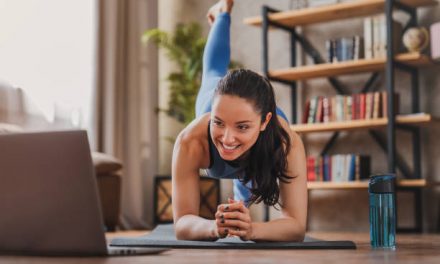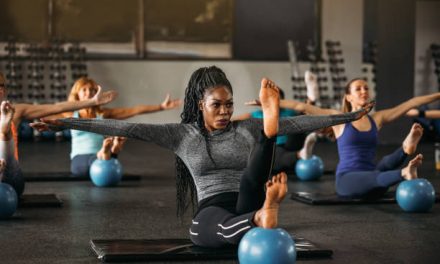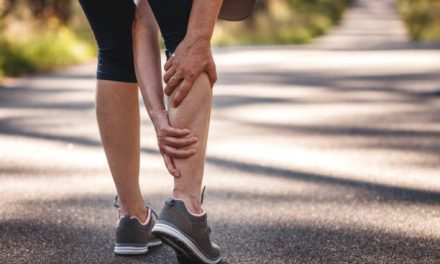Straight and Strong: Improving Posture Through Exercise
Good posture is more than standing tall—it’s a reflection of how your body aligns, moves, and functions. With our modern lifestyles involving long hours of sitting, screen time, and limited movement, poor posture has become a common issue. Over time, it can lead to back pain, fatigue, joint strain, and even breathing difficulties. Fortunately, specific exercises can help restore balance, strengthen muscles, and improve posture naturally.
Understanding Posture
Posture refers to the alignment of your body when standing, sitting, or moving. Ideal posture keeps your bones and joints in proper position, allowing muscles to work efficiently without unnecessary strain. When posture deteriorates—due to weak muscles, tightness, or habit—compensations occur, placing pressure on the spine, neck, and shoulders.
Common postural issues include:
• Forward head posture: when the head juts forward, often caused by phone or computer use.
• Rounded shoulders: from weak upper back muscles and tight chest muscles.
• Anterior pelvic tilt: when the hips tilt forward, leading to exaggerated lower back curvature.
• Slouched sitting posture: due to weak core and gluteal muscles.
Correcting these imbalances through targeted exercises can restore alignment and reduce pain.
Why Exercise Improves Posture
Exercise strengthens the muscles that support the spine, increases flexibility, and retrains the body to maintain proper alignment. Strong postural muscles—especially in the core, back, shoulders, and hips—act as stabilizers that keep the body upright.
When combined with stretching and mobility work, posture-correcting exercises help:
• Relieve tension in the neck, shoulders, and lower back
• Improve balance and coordination
• Enhance breathing efficiency and circulation
• Boost confidence and body awareness
Core Strength: The Foundation of Good Posture
A strong core is essential for upright posture. The core includes not only the abs but also the lower back, hips, and pelvic muscles that stabilize the spine.
Effective Core Exercises:
• Plank: Supports the spine and engages deep abdominal muscles. Start with 30 seconds and gradually increase.
• Dead Bug: Lie on your back, arms extended toward the ceiling, and move opposite arm and leg while keeping your lower back pressed into the floor.
• Bird Dog: From a tabletop position, extend opposite arm and leg, maintaining balance and alignment.
• Pelvic Tilt: Strengthens the lower abs while gently mobilizing the lower back.
These exercises build endurance and control, both of which are key for maintaining posture throughout the day.
Strengthening the Upper Back and Shoulders
Modern life often leads to rounded shoulders and weak upper backs due to constant screen use. Strengthening these muscles helps open the chest and pull the shoulders back into alignment.
Upper Back Exercises:
• Rows: Using resistance bands or dumbbells, row toward your torso to activate the rhomboids and middle traps.
• Reverse Fly: With light weights, hinge at the hips and raise arms outward to strengthen posterior shoulder muscles.
• Wall Angels: Stand with your back against the wall, arms bent at 90 degrees, and slowly raise and lower them while keeping contact with the wall.
• Scapular Retraction: Squeeze your shoulder blades together for a few seconds, then release.
Consistent upper-back training improves shoulder alignment and reduces slouching.
Flexibility and Mobility for Better Alignment
Tight muscles can pull the body out of alignment. Stretching and mobility exercises restore balance between the front and back of the body.
Key Stretches:
• Chest Opener: Clasp hands behind your back and lift slightly to stretch the pectoral muscles.
• Cat-Cow Stretch: Alternating between arching and rounding your back to mobilize the spine.
• Hip Flexor Stretch: Step one foot forward into a lunge, pressing hips gently forward to counteract prolonged sitting.
• Upper Trap Stretch: Tilt your head to one side, gently pulling with your hand to stretch the opposite neck muscles.
Perform these stretches daily to maintain flexibility and promote better posture.
Yoga and Pilates: Mindful Postural Practice
Yoga and Pilates emphasize controlled movement, balance, and core stability—all vital for posture improvement. They teach body awareness, helping you recognize and correct misalignment in daily life.
Yoga Poses for Posture:
• Mountain Pose (Tadasana): Reinforces alignment from head to toe.
• Cobra Pose: Strengthens the back and opens the chest.
• Bridge Pose: Activates glutes and stabilizes the pelvis.
• Child’s Pose: Encourages spinal decompression and relaxation.
Pilates Exercises:
• The Hundred: Engages deep core muscles.
• Roll-Up: Builds spinal flexibility and abdominal strength.
• Swan: Opens the chest and improves spinal extension.
Practicing these disciplines two or three times a week enhances posture, balance, and flexibility.
Posture Awareness in Daily Life
Improving posture isn’t just about working out—it’s about awareness and habit. Incorporate these tips into your day-to-day routine:
• Check alignment: Imagine a straight line from your ear through your shoulder, hip, knee, and ankle.
• Adjust your workspace: Keep screens at eye level, shoulders relaxed, and feet flat on the floor.
• Take movement breaks: Stand and stretch every 30–45 minutes.
• Strengthen while sitting: Engage your core and sit tall, avoiding slouching against the chair back.
• Wear supportive footwear: Avoid high heels and shoes that alter your gait.
Making small adjustments throughout your day helps reinforce the benefits of exercise and prevents postural regression.
Breathing and Posture Connection
Posture influences how effectively you breathe. When you slouch, your diaphragm compresses, reducing lung capacity. Practicing deep, diaphragmatic breathing improves posture by naturally engaging the core and lengthening the spine.
Try this exercise: Sit or stand tall, inhale deeply through your nose, letting your abdomen expand, then exhale slowly while drawing your belly button toward your spine. This reinforces good posture and strengthens respiratory muscles.
Rest and Recovery
Posture correction takes time and consistency. Recovery allows muscles to adapt and strengthen. Incorporate rest days, proper sleep, and gentle mobility work to support progress. Massage, foam rolling, and stretching after workouts can release tension in tight areas like the neck, chest, and hip flexors.
Long-Term Benefits of Better Posture
Improving posture has far-reaching effects beyond physical appearance. It enhances energy levels, prevents chronic pain, and improves mood and confidence. People with good posture breathe more efficiently, experience fewer headaches, and report higher productivity.
Strong, aligned posture also protects your spine as you age, reducing the risk of degenerative conditions and maintaining mobility. By combining targeted exercise, awareness, and healthy habits, you can transform your posture and overall well-being.
Final Takeaway
Posture is the foundation of movement, confidence, and health. Through consistent exercise—strengthening your core, back, and shoulders, and maintaining flexibility—you can retrain your body to stand tall and move with balance. Every rep, stretch, and mindful breath contributes to a stronger, straighter, and healthier version of yourself.
References
- Mayo Clinic. Posture: How to Improve Your Posture for Better Health. https://www.mayoclinic.org/healthy-lifestyle/adult-health/in-depth/posture/art-20045168
- Harvard Health Publishing. Why Good Posture Matters and How to Improve It. https://www.health.harvard.edu/pain/why-good-posture-matters-and-how-to-improve-it
- Cleveland Clinic. How to Fix Poor Posture: Exercises and Tips. https://health.clevelandclinic.org/how-to-fix-bad-posture
- Johns Hopkins Medicine. Exercises to Strengthen Core and Improve Posture. https://www.hopkinsmedicine.org/health/wellness-and-prevention/core-exercises-to-improve-posture
- American Council on Exercise (ACE). Corrective Exercise Strategies for Better Posture. https://www.acefitness.org/resources/pros/expert-articles/





